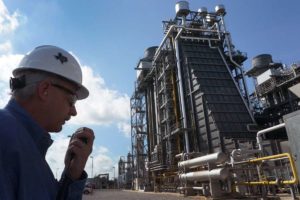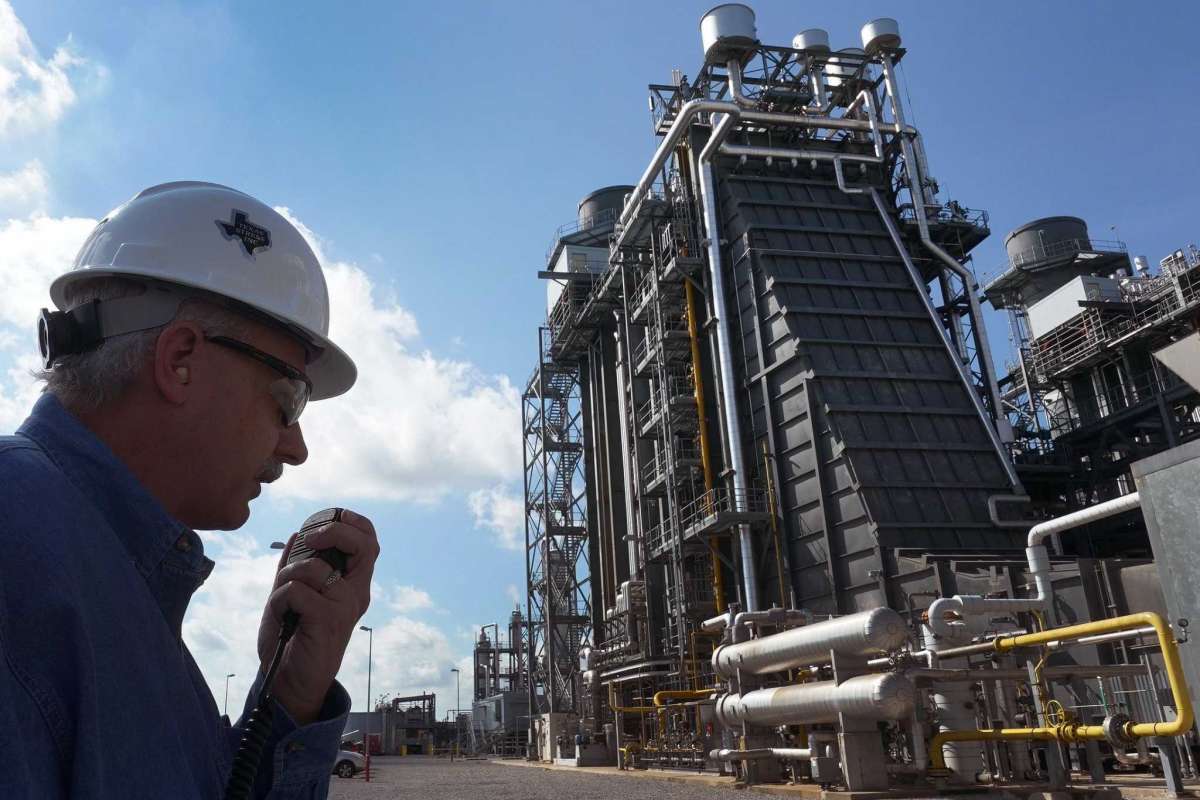 The catastrophic blackouts that crippled Texas during the recent winter storm were caused largely by the energy industry’s failure to ensure reliable natural gas supplies to power plants — a problem that state regulators and industry leaders have known about for at least a decade.
The catastrophic blackouts that crippled Texas during the recent winter storm were caused largely by the energy industry’s failure to ensure reliable natural gas supplies to power plants — a problem that state regulators and industry leaders have known about for at least a decade.
Much of the blame for last month’s colossal power failure has been directed at the state’s grid operator, the Electric Reliability Council of Texas, or ERCOT, but electric companies and industry experts said natural gas-fired plants were responsible for about half the power generation that was knocked out during the storm.
At its peak, some 25,000 megawatts of gas-fired power plants were taken offline, enough to power 5 million homes. About 9,300 megawatts of the gas generation outages, or more than one-third, were due to fuel shortages, according to ERCOT.
“Everybody’s trying to throw ERCOT, wind and power plants under the bus, but it’s the gas system that primarily failed us,” said Michael Webber, an energy resources professor at the University of Texas at Austin. “And the gas system is really a Railroad Commission thing.”
The Railroad Commission is the state’s oil and gas regulator, overseeing the production sites, processing plants and pipelines that make up the state’s natural gas system, which provides the fuel to generate about half of Texas’ electricity. Since the power crisis, the electricity and natural gas industries have engaged in a chicken-and-egg blame game — generators say they couldn’t make electricity because of gas shortages and gas companies say they couldn’t deliver the fuel because of power shortages.
Both were likely factors, according to analysts and experts, although a full assessment won’t be known for months. In either case, years of weak oversight, preparation, communication and coordination among regulators responsible for the reliability of Texas’ natural gas supply and power grid allowed oil and companies to skimp on minimal safeguards that could have prevented or minimized the deadly and devastating power outages, according to industry analysts and documents.
The Railroad Commission — composed of three elected officials who receive large contributions from the oil and gas industry — didn’t mandate winterization to prevent oil and gas wells from freezing, require backup power for critical equipment or even ensure that producers and pipeline operators sought priority status for power during emergency outages.
In legislative hearings dissecting the power crisis, Christi Craddick, a Republican who chairs the Railroad Commission, said she was unaware that natural gas producers, like hospitals and other essential services, could seek exemptions from rolling outages — exemptions that might have kept more gas flowing to power plants.
“I didn’t know that was an opportunity,” Craddick told lawmakers. “We’d never been told that as an agency, to my knowledge. We didn’t have anything on our website. And really it’s a function of working with those energy companies and ERCOT to put those people as priority.”
Decade of inaction
The Railroad Commission has long known of the system’s vulnerability to ice storms and its interdependence with the state’s electricity grid, according to industry analysts and documents. After a 2011 winter storm that led to rolling outages in Texas, federal authorities and state lawmakers zeroed in on the need for power plants to be weatherized against freezing temperatures.
But a widely shared report published by the Federal Energy Regulatory Commission in 2011 also highlighted a similar lack of winter precautions among natural gas suppliers and recommended that natural gas producers and pipelines be exempted from emergency outages. Many gas supply facilities were not, according to utility executives testifying to lawmakers.
A study commissioned the following year by ERCOT underscored the same vulnerabilities. The report, conducted by consulting firm Black & Veatch, found that nearly two-thirds of natural gas supply disruptions over the previous two years were caused by freezing weather.
Companies can install insulation and heating elements to prevent critical equipment from freezing up, and inject methanol, a kind of antifreeze, into oil and gas wells to prevent them from icing over.
“With gas prices being low – and storage being full – the risk of 2-3 days of possible freeze-off every several years is a risk that Gulf Coast producers have been willing to take,” Black & Veatch said in its report.
This risk left Texas, the nation’s top natural gas-producing state, vulnerable to last month’s winter storm. Although every electricity source failed — including wind, coal, solar and nuclear — none failed as extensively as natural gas.
As the temperature fell below freezing, natural gas production plunged. Wellheads froze as water used in hydraulic fracturing turned to ice, and frigid temperatures caused pipelines to lose pressure and fail.
Power outages later compounded the problem, leaving gas processing facilities and pipeline pumps inoperable. Although Texas has one of the nation’s largest supply of natural gas in storage, the lack of power limited its withdrawal, according to Enverus, an energy research firm.
Texas natural gas production fell by nearly half during the storm, according to the research and consulting firm IHS Markit. The ensuing power plant failures and widespread blackouts contributed to more than 40 deaths, billions of dollars of property damage and left more than 4 million Texans shivering in dark homes.
Economic incentive
Protecting the natural gas supply became increasingly important in recent decades as shale gas boomed, coal plants closed and a burgeoning export market grew along the Gulf Coast.
Yet Texas regulators and industry leaders have relied solely on market forces to push producers to protect this vital supply chain. Natural gas producers that can maintain output during periods of peak demand — such as in a winter storm – can reap huge profits from high prices, so it behooves them to ensure reliability, the thinking goes.
During the winter storm, natural gas spot prices at the Houston Ship Channel hit $385 per million British thermal units, up from less than $3 per million British thermal units a couple of weeks before the storm. In other markets, natural gas prices soared above $1,000 per million British thermal units, shattering records.
Still, the prospect of massive payoffs failed to convince most Texas natural gas producers to prepare for last month’s winter storm. That’s not surprising, energy analysts said.
Weatherizing Texas’ more than 130,000 gas wells and thousands of miles of pipelines is likely to cost billions of dollars; a single well can cost up to $34,000 to winterize, according to the 2011 FERC report. And there’s no guarantee those investments would pay off during winter storms that occur once a decade, making the risk of equipment failure worth taking.
“There’s too much uncertainty about future weather patterns,” said Jim Krane, an energy fellow at the Baker Institute for Public Policy at Rice University. “At the end of the day, the incentives in the market that were supposed to incentivize gas producers to deliver their product in all kinds of weather failed.”
No mandate
The Railroad Commission does not mandate weatherization of the natural gas supply, saying it found no such mandates in other states or at the federal level. Governor Greg Abbott is pushing state lawmakers to mandate weatherization for power plants, but not natural gas producers.
Some larger companies, such as Houston pipeline company Kinder Morgan, said they took steps after 2011 to gird their equipment against similar storms and did not experience significant disruptions. The state, however, has no comprehensive data on the measures that the industry completed.
“We will work with the Legislature and operators to assess the next steps to further solidify infrastructure and commissions to help strengthen emergency responses,” the Railroad Commission said in an email.
In cold climates, such as North Dakota and Alaska, operators winterize as part of the cost of doing business, but it’s impractical to impose all those measures in Texas, said Ron Ness, president of the North Dakota Oil and Gas Association. But there’s probably minimal preparations, such as installing insulation and backup power generators, that producers can take to prevent production disruptions, he added.
“Every energy producer wants to produce energy, especially when it’s needed the most,” Ness said. “You’ve got to keep the natural gas flowing to keep the electrical grid flowing.”
The Texas Oil and Gas Association, the trade group representing energy producers, said the loss of power to natural gas wells and pipelines caused most of the disruption in supplies, not freezing temperatures. But natural gas production, which ramped up ahead of storm, began falling on Feb. 12, two days before ERCOT ordered rolling outages.
Gas companies are not required to report power outages to the state, so it’s hard to know the extent to which outages hindered their operations. Many oil and gas operators were not made aware by ERCOT that they could seek exemptions from power outages until the storm had already hit, the Railroad Commission said.
“While weather created many obstacles,” said Todd Staples, president of the oil and gas association, “many producers winterized and could have continued producing except for the power losses outside their control.”
Lack of oversight
The winter storm shed light on another problem: No one agency or elected official has been put in charge of shoring up Texas’ natural gas supply and electric grid.
Texas is one of two states with split regulation over electricity and gas. The Public Utility Commission oversees ERCOT and the electricity industry. The Railroad Commission oversees oil and gas.
Both the PUC and the Railroad Commission have studied the power system’s vulnerability to extreme weather separately and jointly for years.
In 2019, at the suggestion of Craddick and the former PUC chairwoman DeAnn Walker, ERCOT began engaging gas companies and power generators to improve reliability when demand for electricity is highest. The committee, called the Gas-Electric Working Group, created a simple form for pipeline operators to seek outage exemptions, and reached out to pipeline companies about their preparations.
Less than a third of pipeline companies responded to ERCOT’s request for information about their operations that could be used for emergency planning, according to notes from the working group.
The group met as recently as Sept. 18, 2020, to discuss preparations for the upcoming winter, including a review of what was learned from winter storms in 2011 and 2018, according to a PowerPoint presentation from the meeting.
A spokesman for the Railroad Commission said the agency was not present at the September meeting. ERCOT declined to make anyone available to discuss the group’s work. Several gas and electric companies that provided input either did not respond to messages or would not discuss their participation.
The Railroad Commission has its own subgroup that focuses on reliability in emergencies. It doesn’t post any of the subgroup’s documents publicly. The chairman is a former executive at Enterprise Products Partners, one of the country’s biggest pipeline companies, which declined to comment.
Neither ERCOT nor the Railroad Commission would say whether or how the two groups collaborate.

